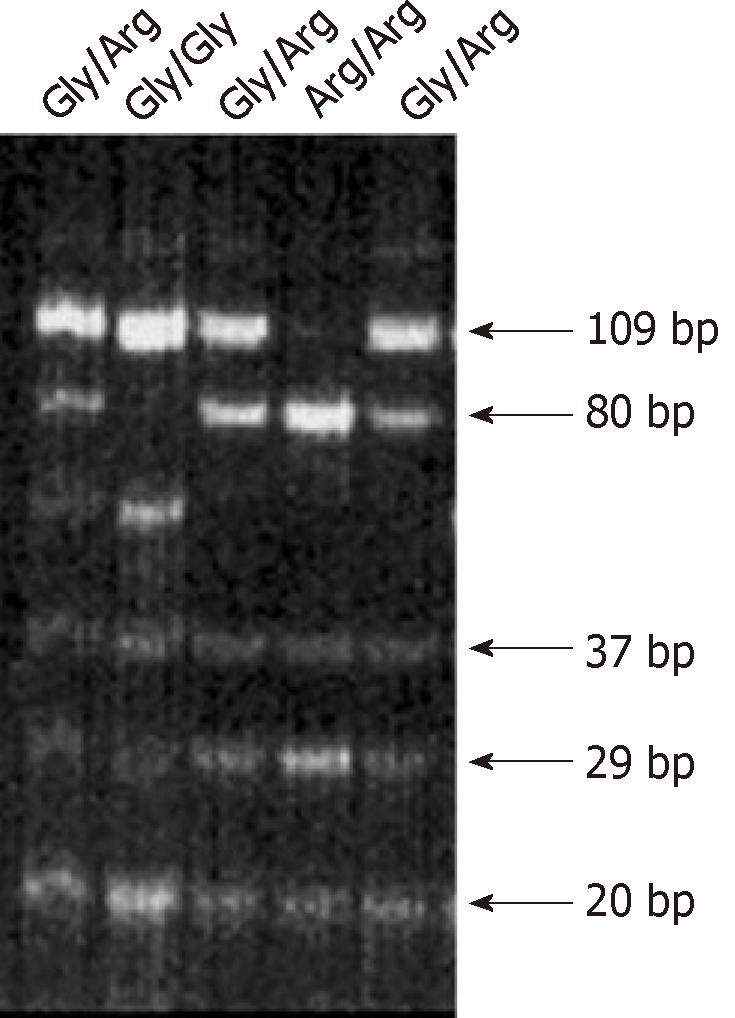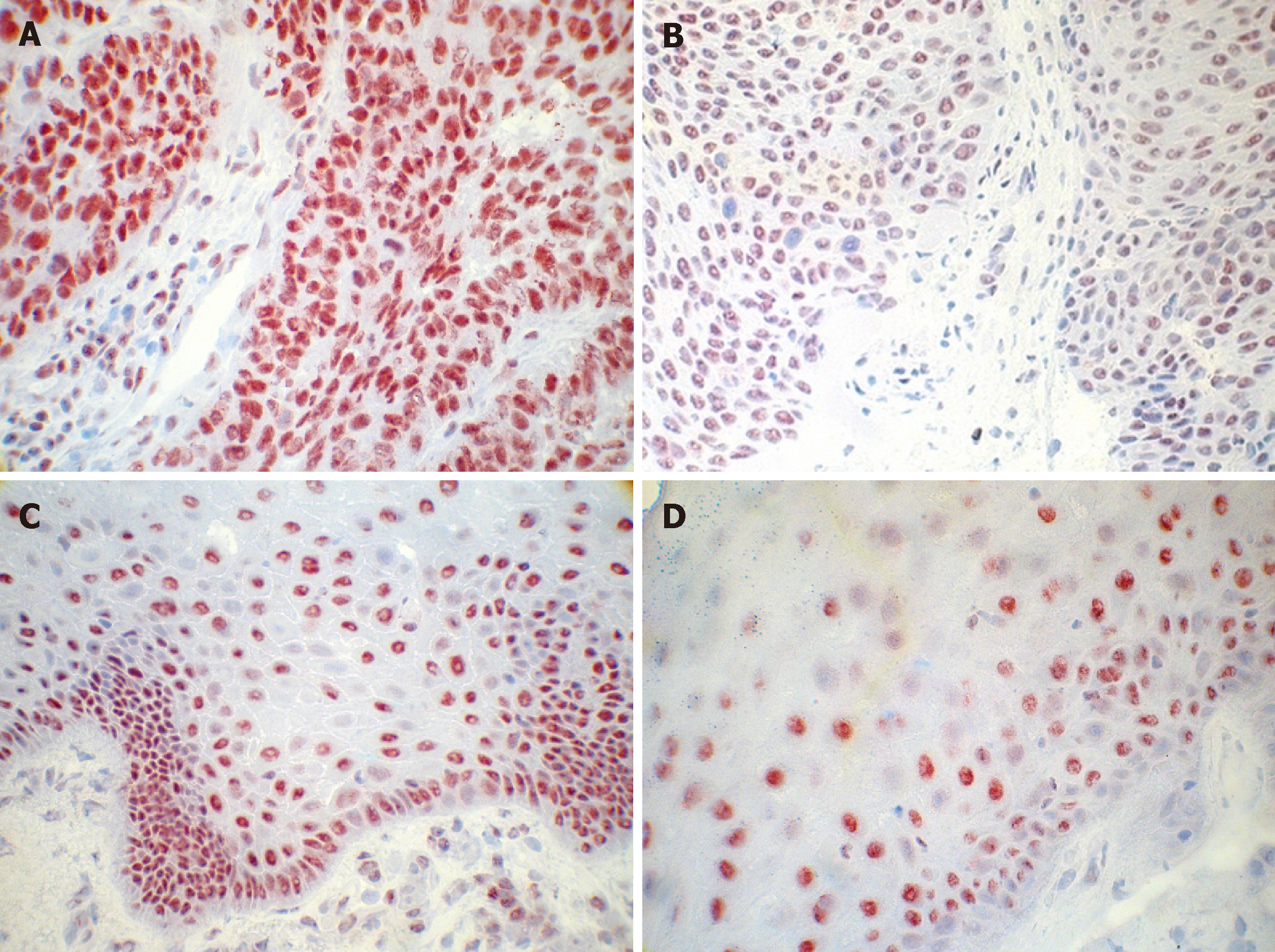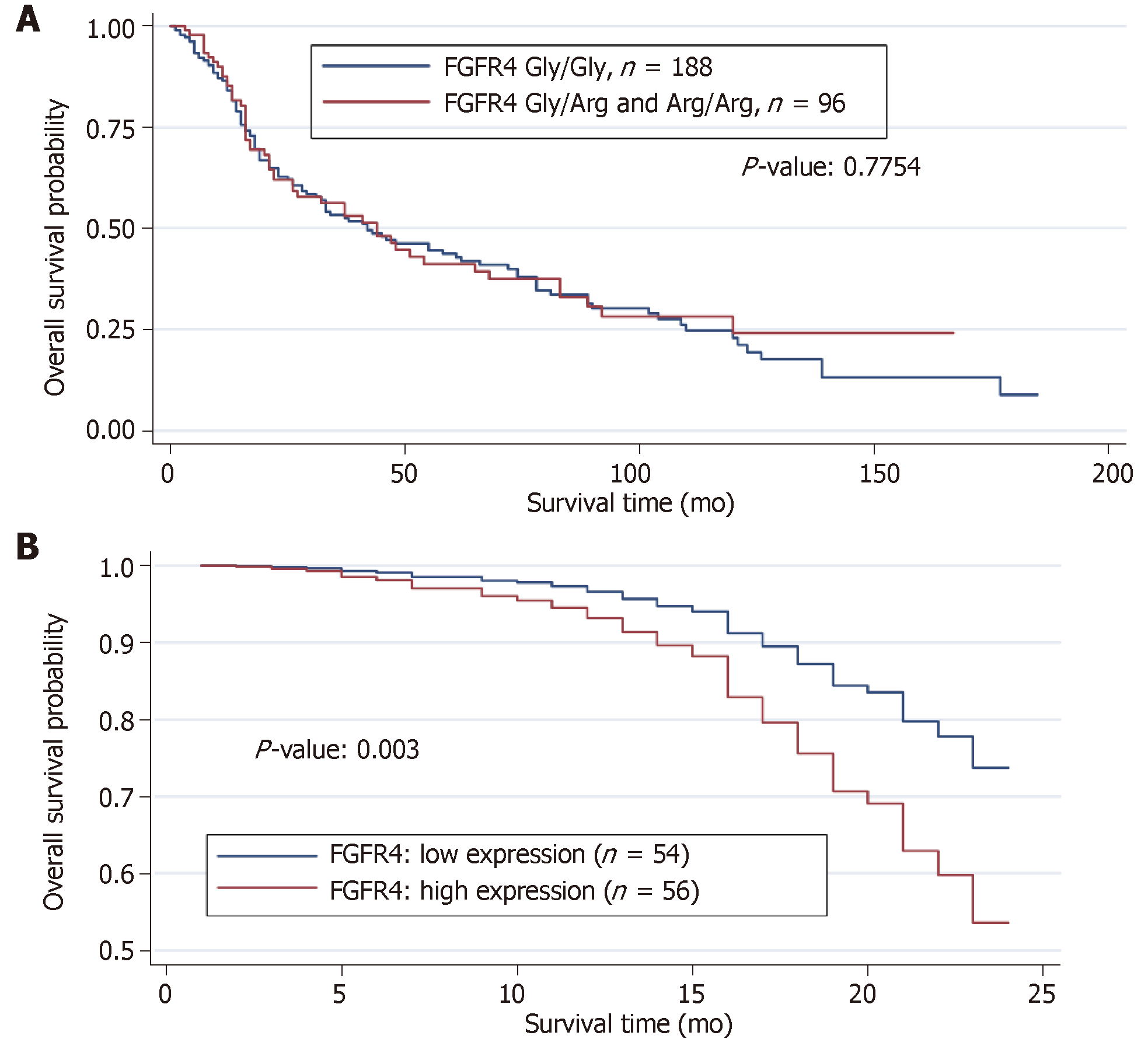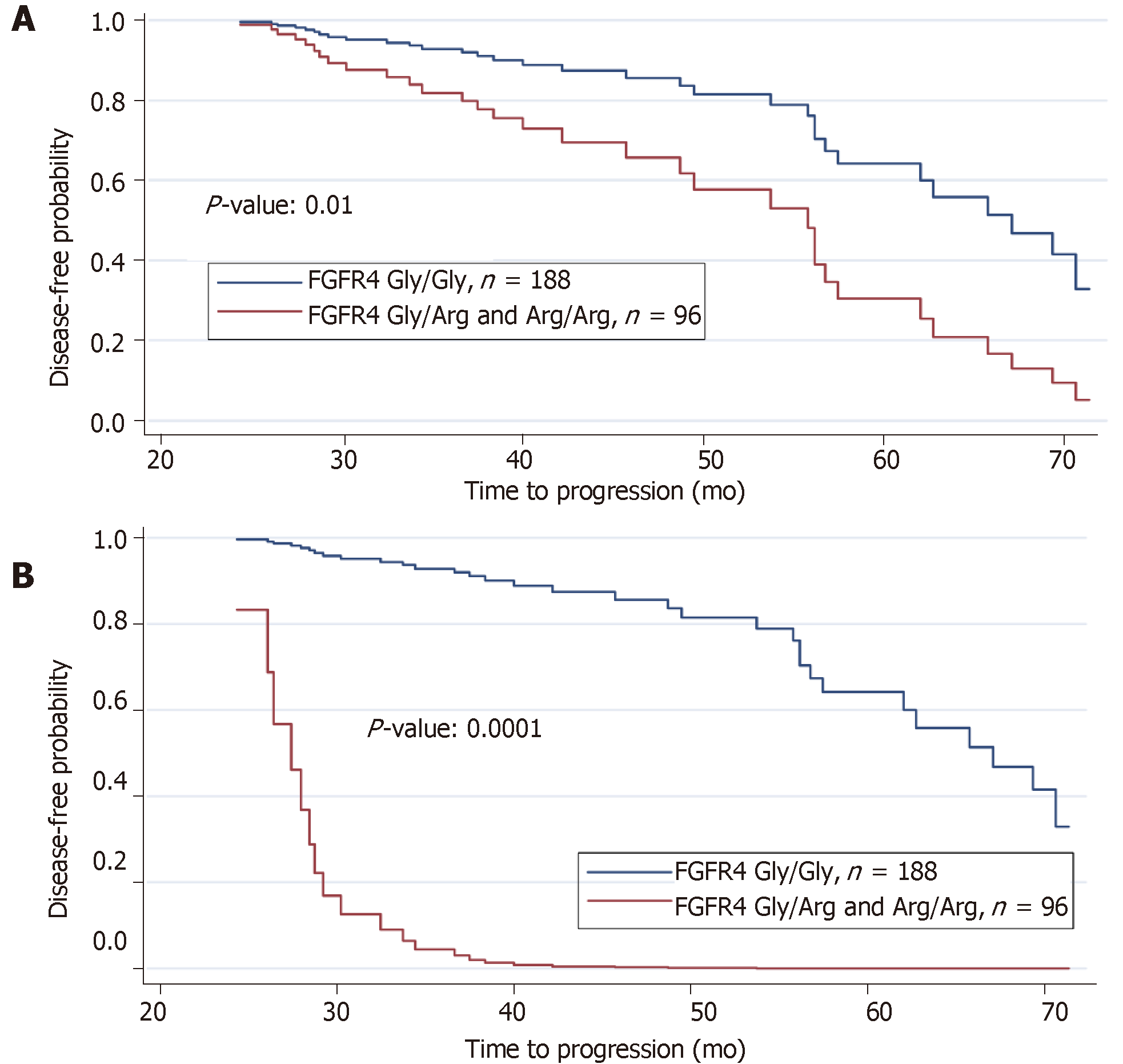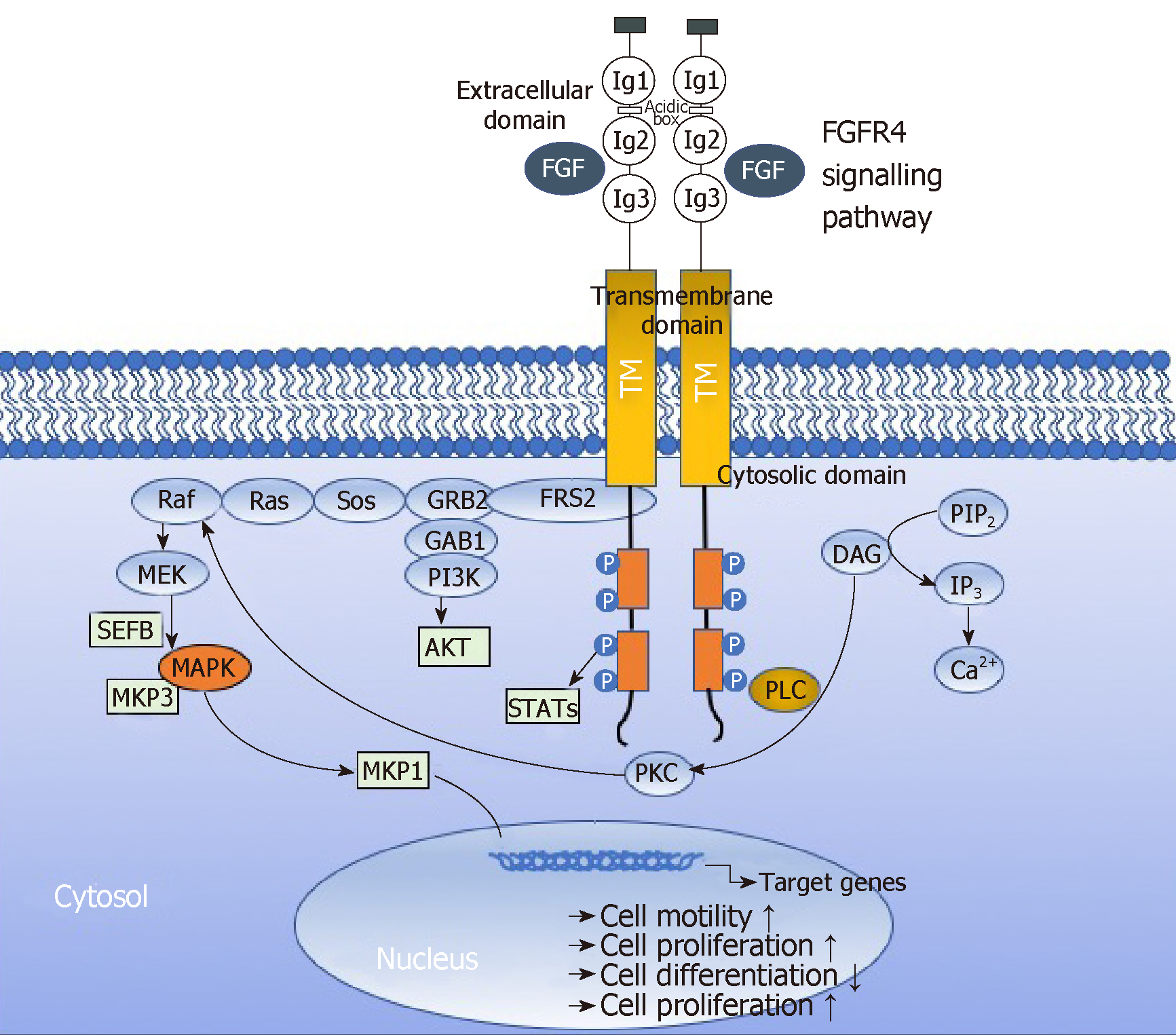Copyright
©The Author(s) 2019.
World J Clin Oncol. Mar 24, 2019; 10(3): 136-148
Published online Mar 24, 2019. doi: 10.5306/wjco.v10.i3.136
Published online Mar 24, 2019. doi: 10.5306/wjco.v10.i3.136
Figure 1 Polymerase chain reaction-restriction fragment length polymorphism analysis of fibroblast growth factor receptor 4 G388 gene.
Five individual tissue specimen of Head and Neck Squmous Cell Carcinoma are presented. Line 2 shows a homozygote carrier for the Glycine allele, the dominant form of the fibroblast growth factor receptor 4 (FGFR4). Lane 1, 3 and 5 show a heterozygote carrier of the FGFR4 with both alleles glycine388 and arginine388. Lane 4 shows a homozygous carrier for the arginine allele.
Figure 2 Immunohistochemical analysis of fibroblast growth factor receptor 4 in primary head and neck squamous cell carcinoma tissue.
A: High expression of fibroblast growth factor receptor 4 (FGFR4) in tissue of oropharyngeal carcinoma; B: Medium expression of FGFR4 in tissue of oropharyngeal carcinoma; C: Low expression of FGFR4 in tissue of oropharyngeal carcinoma; D: Expression of FGFR4 in healthy tissue of oropharyngeal mucosa (Mag. ×40).
Figure 3 Estimated survival function of head and neck squamous cell carcinoma patients for fibroblast growth factor receptor 4 genotype and expression.
A: Wildtype fibroblast growth factor receptor 4 (FGFR4) Gly388 and mutant FGFR4 Arg388 are compared. The P-value reported is the result of the Log-rank test for comparison of survivals; B: Weak expression vs high expression are shown within the first 24 mo of survival study.
Figure 4 Prolonged followup of patients reveals importance of variant fibroblast growth factor receptor 4 allele.
A: Estimated disease-free survival of Head and Neck Squamous Cell Carinoma patients by fibroblast growth factor receptor 4 (FGFR4) genotype showing a reduced disease-free survival due to mutant FGFR4 Arg388 relative to wildtype FGFR4 Gly388 after two years of progression study; B: Estimated disease-free survival (disease progression) of HNSCC patients by FGFR4 genotype with the interactive effects of lymph node, recurrence and tumor status incorporated in the reduction of disease-free survival due to mutant FGFR4 Arg388 relative to the predominant FGFR4 Gly388 allele after two years of study.
Figure 5 Fibroblast growth factor receptor 4 signalling pathway in cancer.
Binding of fibroblast growth factors (FGF) leads to receptor activation, which leads to activation of several downstream signalling pathways, including RAS-RAF-MAPK, PI3K-AKT, signal transducer and activator of transcription (STAT) and phospholipase Cγ (PLCγ). Negative feedback signalling regulate at several levels by induction of negative regulators, including MAPK1 and 3 phosphatase (MKP1 and MKP3). Regulators modulate intracellular signalling through MAP Kinase pathways. These regulations eventually lead to altered cell biology including promotion of cell motility, cell proliferation or inhibition of cell differentiation. DAG: Diacylglycerol; FRS2α: FGFR substrate 2α; GRB2: Growth factor receptor-bound 2; IP3: Inositol triphosphate; P: Phosphorylation; PIP2: Phosphatidylinositol-4,5-biphosphate; PKC: Protein kinase C; Sos: Son of sevenless.
- Citation: Wimmer E, Ihrler S, Gires O, Streit S, Issing W, Bergmann C. Fibroblast growth factor receptor 4 single nucleotide polymorphism Gly388Arg in head and neck carcinomas. World J Clin Oncol 2019; 10(3): 136-148
- URL: https://www.wjgnet.com/2218-4333/full/v10/i3/136.htm
- DOI: https://dx.doi.org/10.5306/wjco.v10.i3.136









